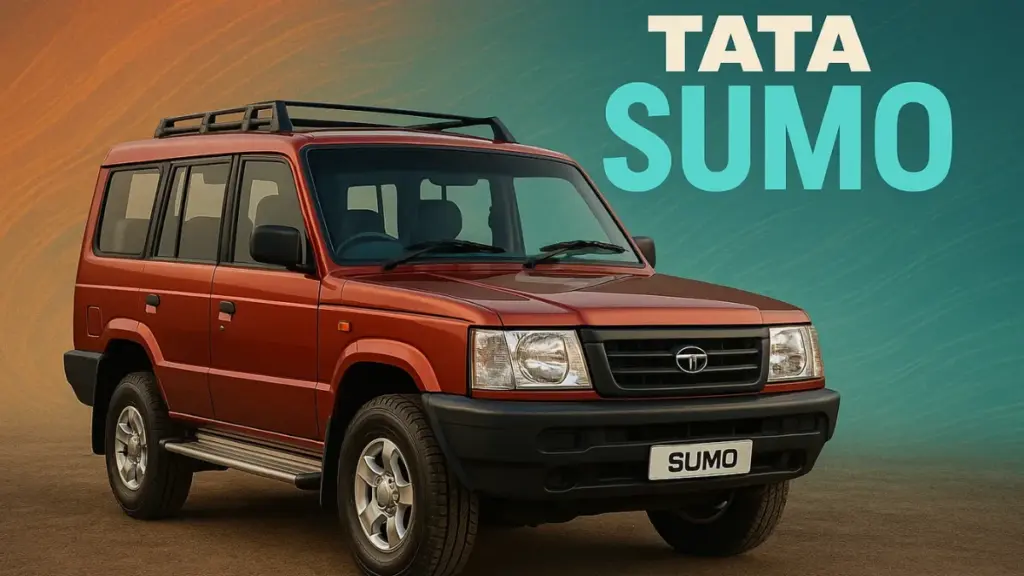Few vehicles in India hold the same legendary status as the Tata Sumo. Introduced in 1994, the Sumo wasn’t just another SUV—it was a cultural phenomenon that transformed how Indians viewed multi-utility vehicles (MUVs). Known for its rugged build, spacious interior, and no-nonsense design, the Tata Sumo became the vehicle of choice for families, government institutions, taxi operators, and even defense forces.
Although Tata eventually discontinued the model, the Sumo remains etched in the hearts of millions of Indians. In this article, we’ll explore the history, design, performance, variants, cultural impact, and legacy of the Tata Sumo, while also discussing whether Tata might ever bring back this legendary SUV in a modern avatar.
The Birth of an Icon
The early 1990s were a turning point for India’s automotive market. Until then, choices were limited, and SUVs were considered niche vehicles. Tata Motors, then known as TELCO (Tata Engineering and Locomotive Company), saw an opportunity to create a practical, spacious, and affordable SUV for both personal and commercial use.
Launched in 1994, the Tata Sumo was named after Sumo wrestling, symbolizing strength, durability, and endurance. True to its name, it quickly became a game-changer in India’s utility vehicle market.
Design and Styling: Functional, Not Fancy
The Tata Sumo’s design was boxy, rugged, and straightforward, with practicality at its core. While it wasn’t flashy, it exuded strength and reliability.
Exterior Highlights:
- Boxy silhouette with high ground clearance for all terrains.
- Large front grille and square headlamps.
- Wide stance and tall body for a commanding road presence.
- Steel bumpers in early models for durability.
- Rear side-hinged door for practicality.
Interior Highlights:
- Spacious cabin with seating for up to 9 passengers.
- Forward-facing and side-facing bench seats depending on variant.
- Simple dashboard layout with durable materials.
- Air-conditioning and power steering added in later models for comfort.
The Sumo’s design philosophy was clear: function over form. It wasn’t meant to turn heads but to carry people and goods reliably.
Engine and Performance
The Tata Sumo was known for its dependable diesel engines that prioritized torque and durability over speed.
Engine Options Over the Years:
- 2.0L Diesel engine (68 HP) in the first-generation models.
- 3.0L Turbocharged Diesel engine (90 HP) in later models.
- CR4 diesel engine introduced in the Sumo Gold, with improved refinement and efficiency.
Driving Dynamics:
- High torque output made it ideal for carrying heavy loads.
- Rugged suspension capable of handling rough Indian roads.
- Rear-wheel-drive (RWD) as standard; some models had 4×4 variants for defense use.
The Sumo was not built for speed—it was built to last forever and go anywhere.
Variants and Evolution
Over its two-decade journey, the Tata Sumo went through several updates:
- Tata Sumo (1994) – The original model, simple and functional.
- Tata Sumo Deluxe (1996) – Added comfort features for family buyers.
- Tata Sumo Spacio (2000) – Budget-friendly variant for rural buyers.
- Tata Sumo Victa (2004) – Major design update with a modernized interior.
- Tata Sumo Grande (2008) – Positioned as a more premium SUV but didn’t achieve expected success.
- Tata Sumo Gold (2011) – The final version with updated styling, BS4 engine, and added features.
Each variant tried to evolve with customer expectations while retaining the rugged DNA of the original.
The Sumo in Government and Military Service
One of the reasons the Tata Sumo became legendary was its adoption by government bodies and armed forces.
- Widely used by police, paramilitary forces, and the Indian Army.
- Served as ambulances, troop carriers, and patrol vehicles.
- Known for reliability in tough terrains, from deserts to mountains.
The Sumo’s ability to withstand abuse made it a trusted partner for institutions requiring rugged mobility.
Cultural Impact of the Tata Sumo
The Tata Sumo was more than just a vehicle—it became a symbol of trust and power in India.
- Families loved it for long road trips and spacious interiors.
- Taxi operators relied on it for affordability and durability.
- Rural buyers trusted it as a go-anywhere machine.
- Its presence in Bollywood movies and TV shows further cemented its cult status.
For many Indians, the Sumo wasn’t just transport—it was a part of their lifestyle and memories.
Discontinuation: The End of an Era
By the late 2010s, stricter emission norms and changing consumer tastes made it difficult for Tata to continue the Sumo.
- BS6 emission regulations required costly engine upgrades.
- Buyers began preferring modern SUVs like the Nexon, Harrier, and Safari.
- Safety standards (like airbags and crash tests) also made the old design outdated.
In 2019, Tata finally discontinued the Sumo, marking the end of a glorious 25-year run.
Will Tata Bring Back the Sumo?
With the success of modern SUVs and the rising demand for rugged, practical vehicles, rumors often surface about a modern Tata Sumo revival.
If relaunched, the new Sumo could feature:
- A modern design inspired by the old boxy silhouette.
- BS6-compliant turbo-diesel engine.
- Advanced safety features like airbags, ABS, ESC, and crash-test compliance.
- Tech-loaded cabin with touchscreen infotainment, connected car features, and climate control.
While Tata has not confirmed a comeback, the legacy of the Sumo ensures there will always be demand for its revival.
Legacy of the Tata Sumo
The Tata Sumo left behind a legacy few vehicles can match:
- Over 1.5 million units sold in its lifetime.
- A vehicle trusted by families, businesses, and defense forces alike.
- Inspired other Tata SUVs, paving the way for the Safari, Hexa, and Harrier.
- Still fondly remembered in rural and urban India.
It was one of the first vehicles to show that India could build a world-class utility vehicle for its unique conditions.
Conclusion
The Tata Sumo was more than an SUV—it was an emotion for millions of Indians. With its robust design, reliable diesel engines, spacious interiors, and unbeatable practicality, it became the ultimate people’s car. Even years after its discontinuation, the Sumo remains a legend in India’s automotive history.
Whether Tata decides to revive it in a modern form or not, the Sumo’s legacy will continue to inspire future generations of SUVs. For those who experienced it, the Tata Sumo wasn’t just transport—it was a trusted companion on every journey.


